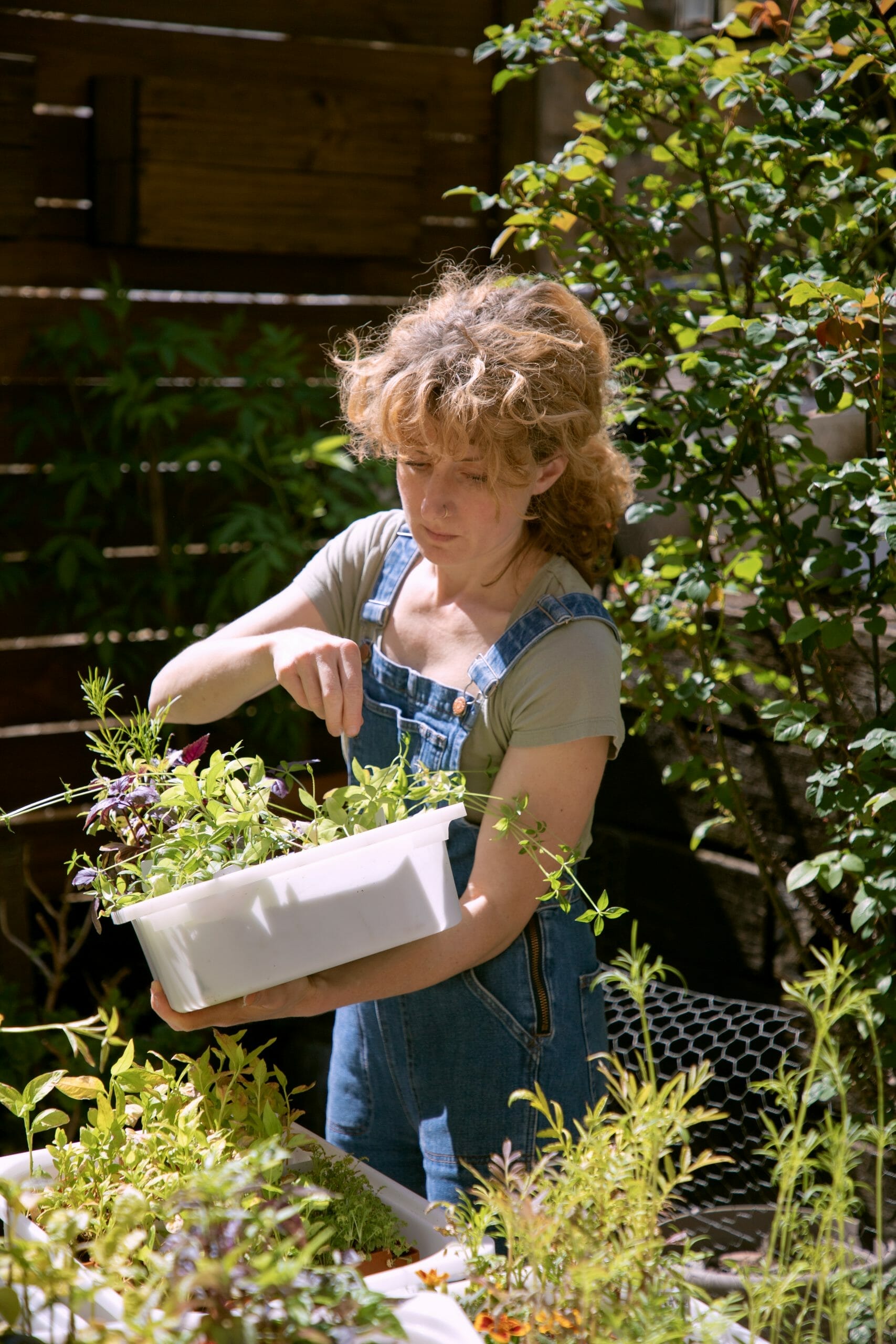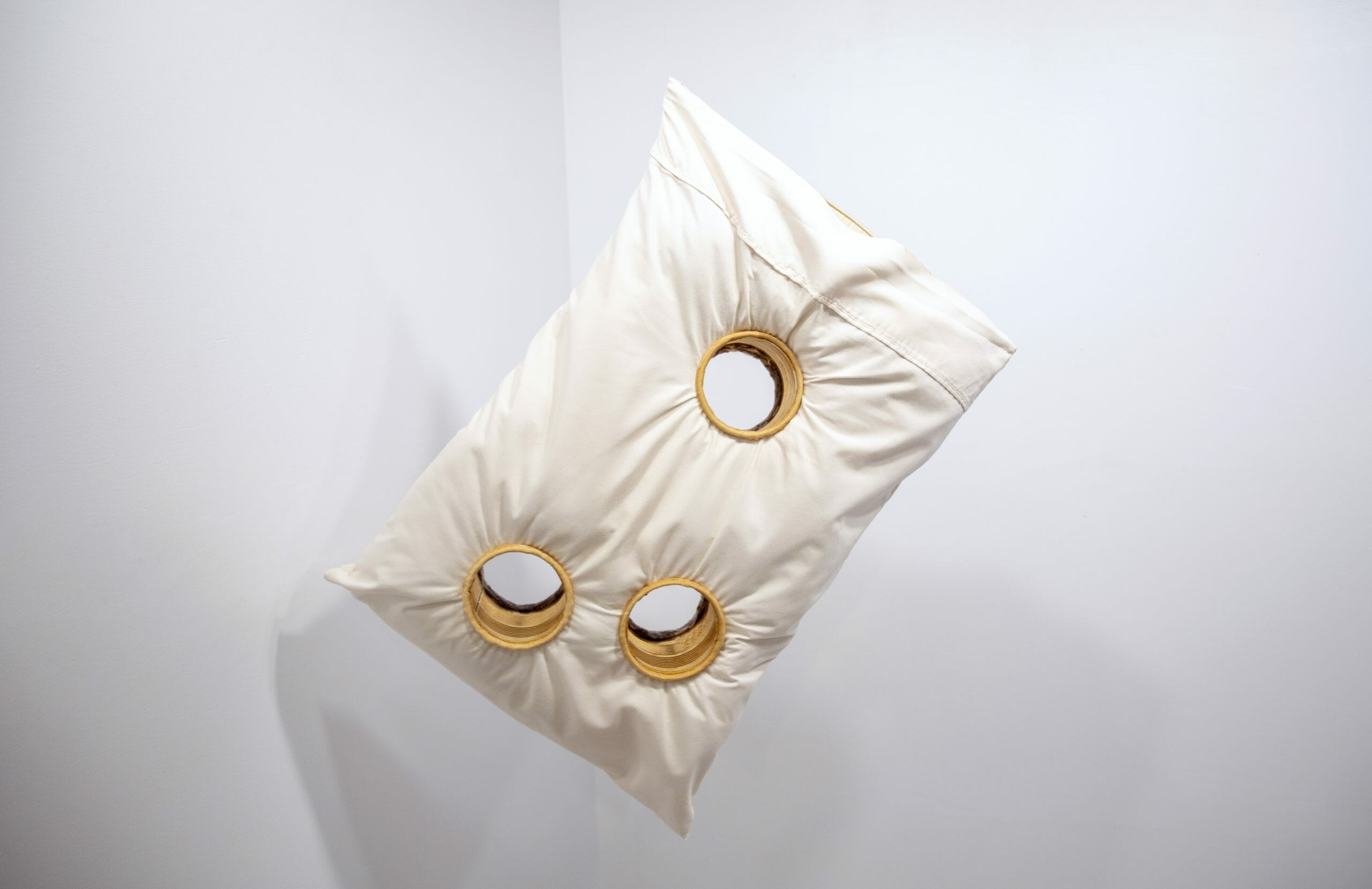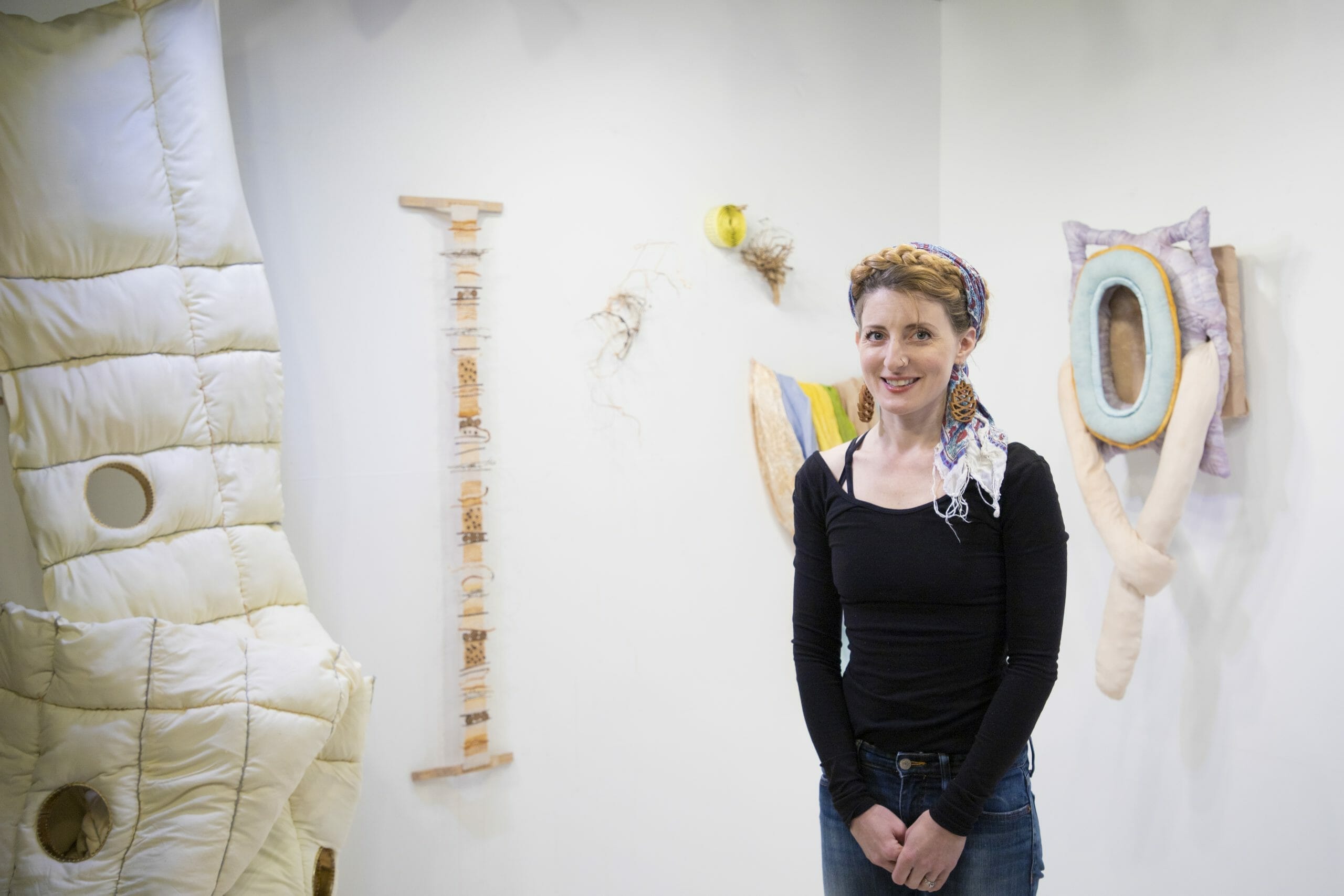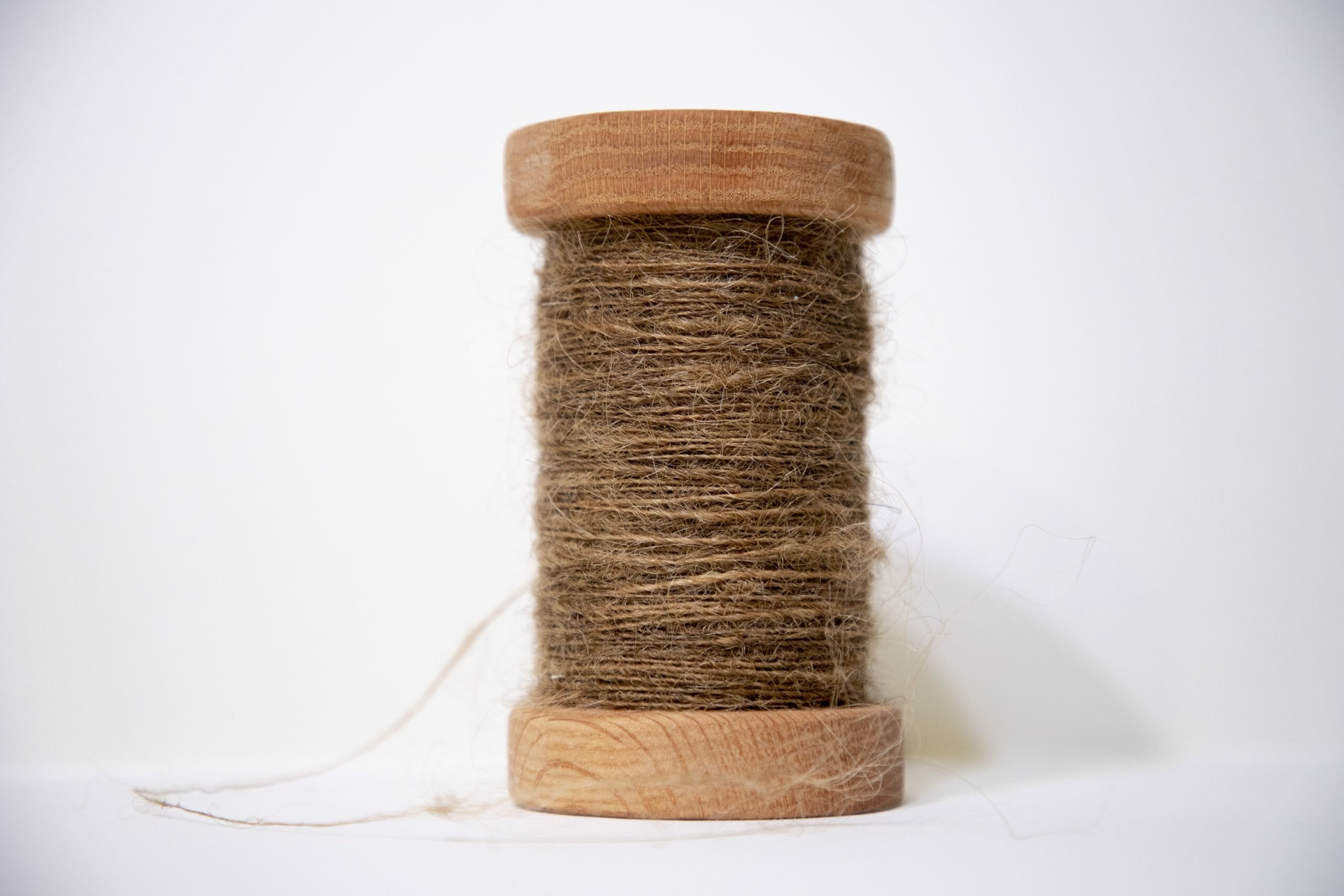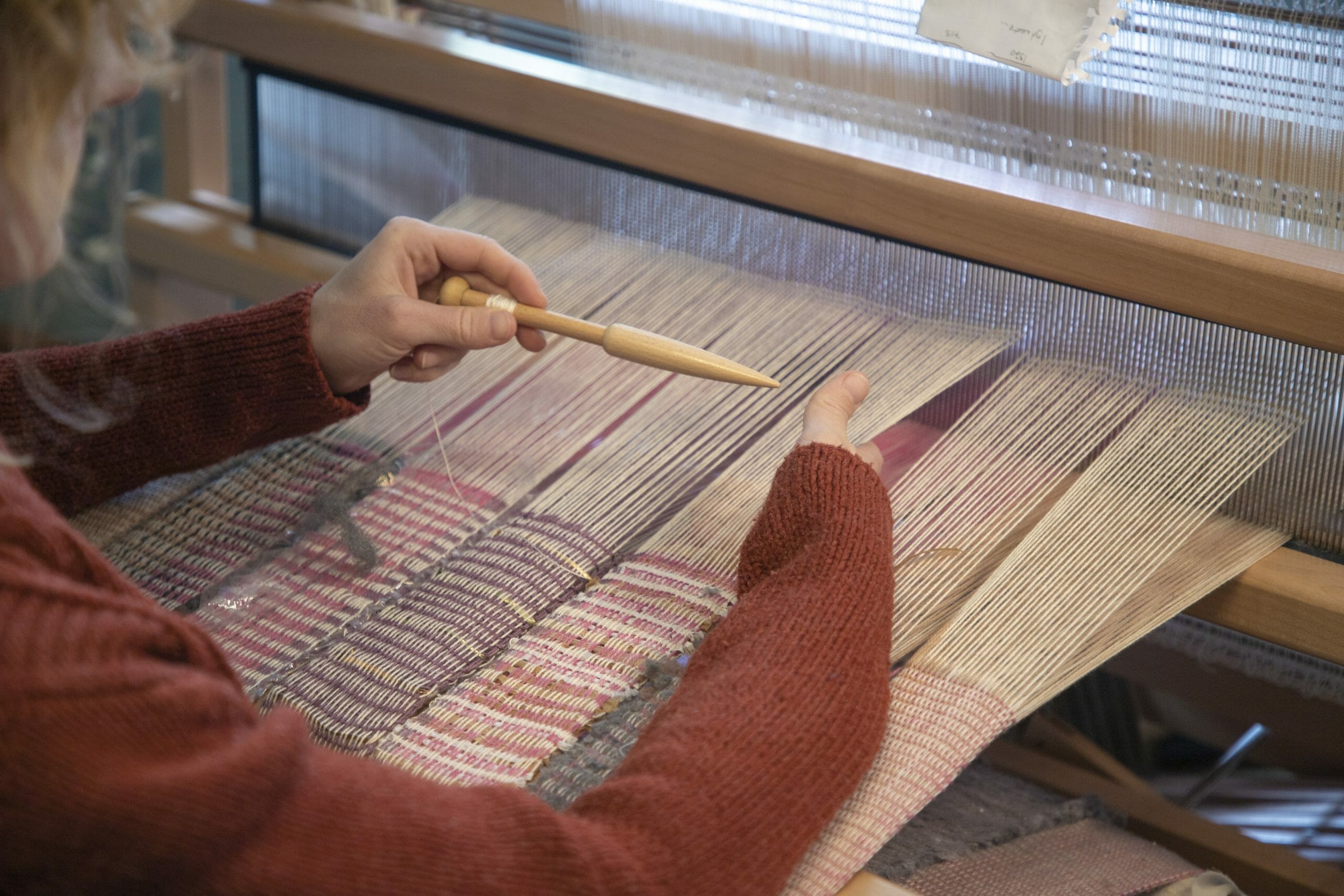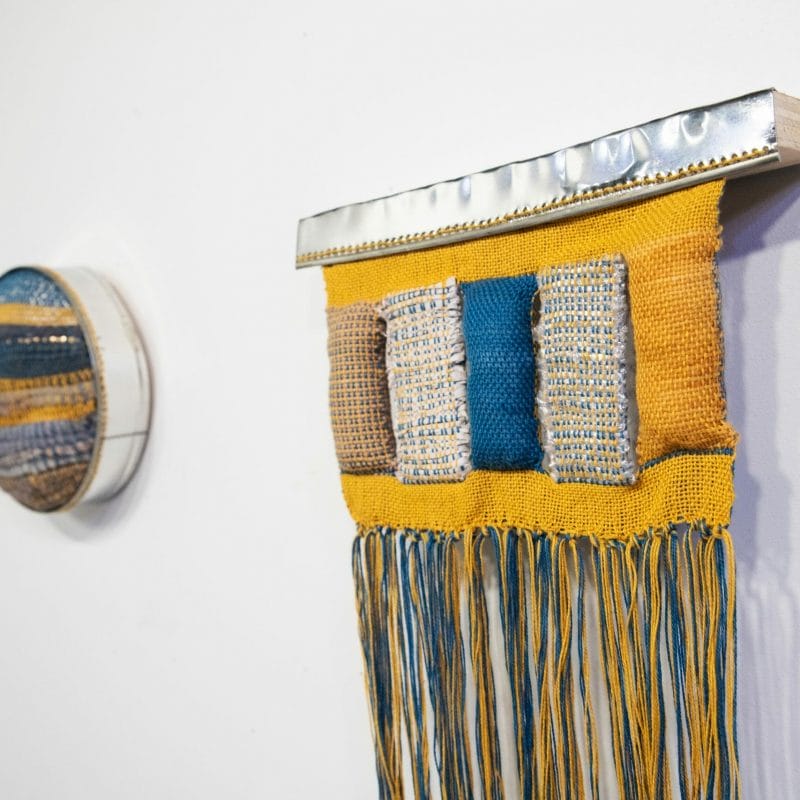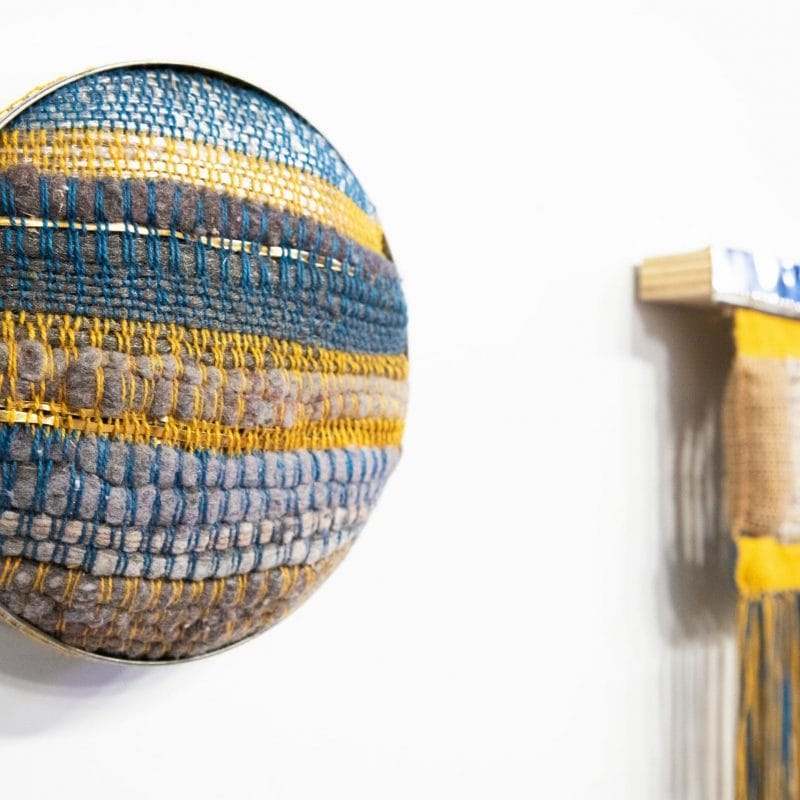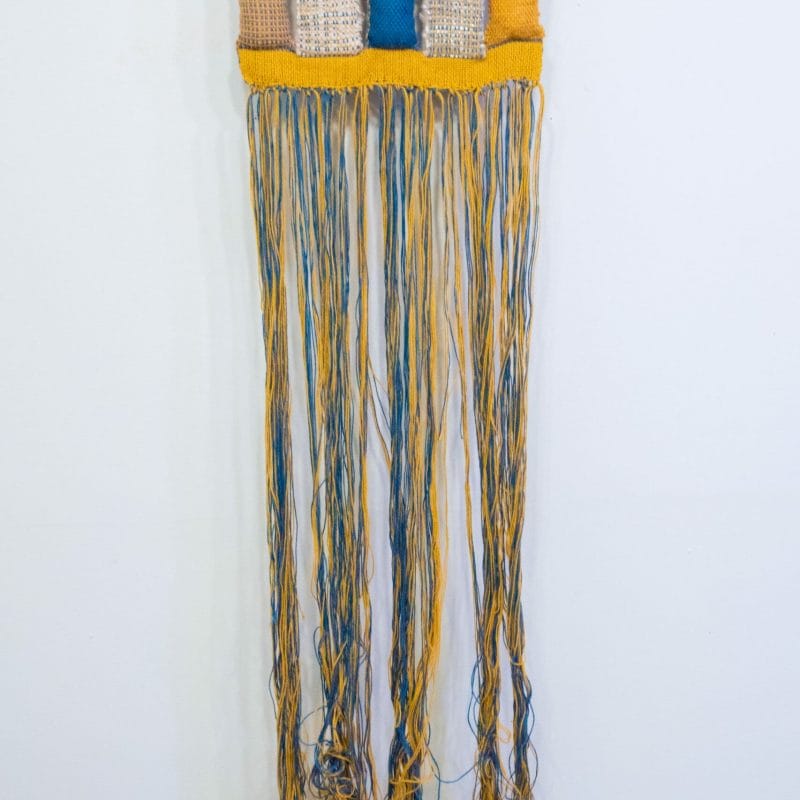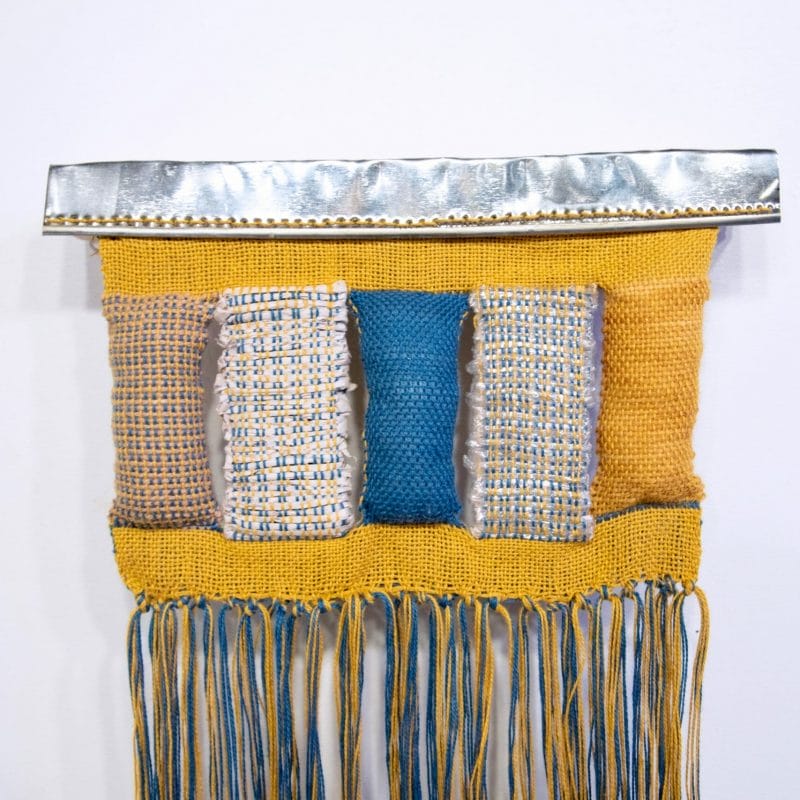STEFANIE ZITO
*Featured photo: Stefanie Zito, photo cr. Jonathan Zito
Stefanie Zito, a fiber artist currently living and working in Pittsburgh, PA, studied at the New York Center for Arts and Media Studies and is a Certified Permaculture Designer.
Stefanie’s work is deeply rooted in materials. Her research, which also makes use of permaculture principles, leads her to explore and re-imagine everyday objects and materials from a circular perspective. A conscious use, respect for the natural cycle of life, recovery, redevelopment and transformation become fundamental elements of her artistic practice, and are widely developed and recognisable in works such as Pillow Portal, a piece thanks to which the artist has been selected for Fiberart International 2022, a major international event dedicated to textile art, which will open on 3 June in Pittsburgh (Pennsylvania).
In this interesting interview exclusively for our magazine and in collaboration with Fiberart International 2022, the artist talks about her professional career and the foundations on which her research is based.
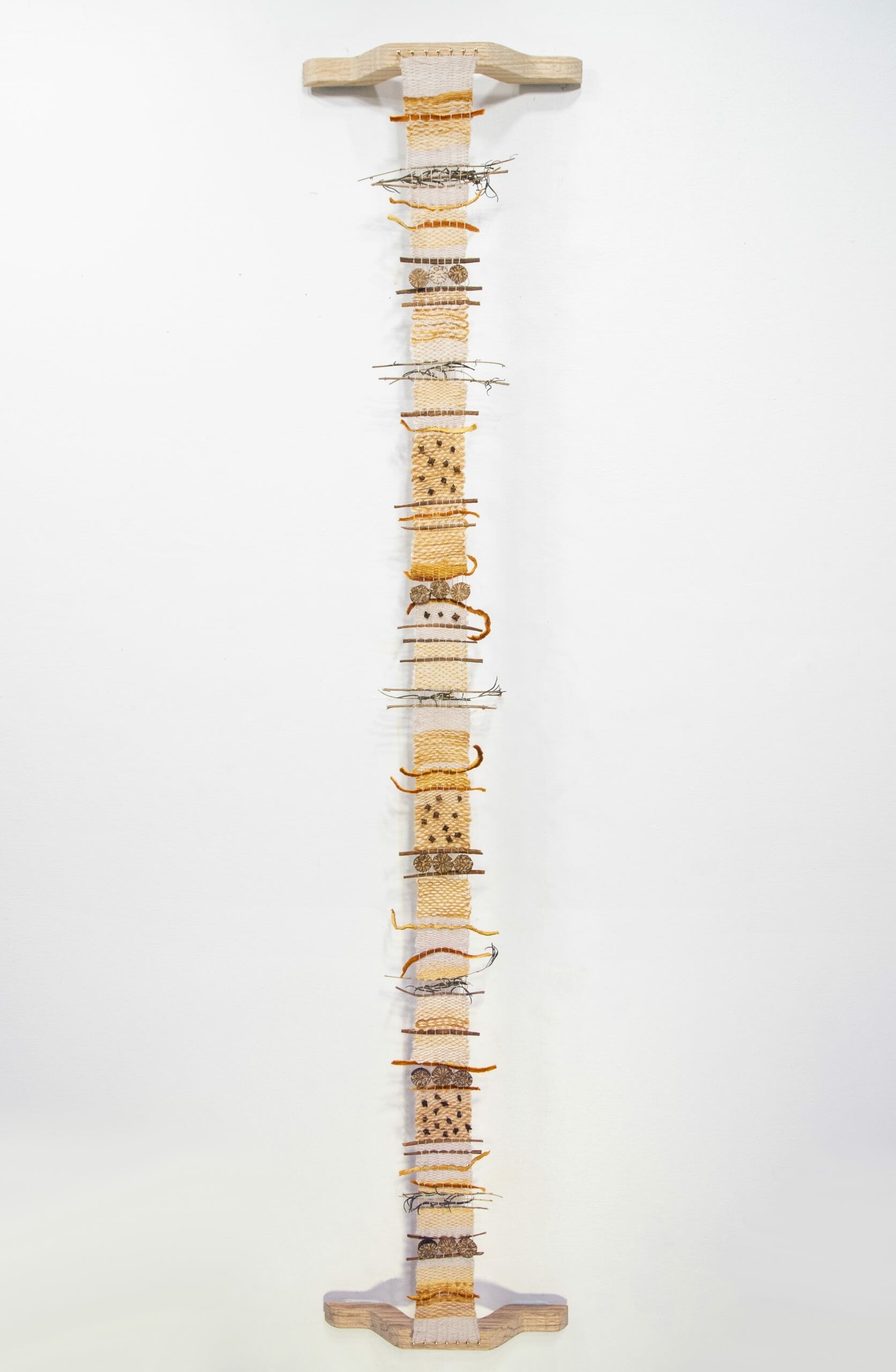
What was the path that led you to textile art? Was there a decisive moment in your life when you realised you wanted to be an artist?
Ever since I first held a crayon in my hand at a very young age, I was completely captivated by art making. I was fortunate to spend a lot of time making art as a kid. Some of my strongest early memories involve drawing endlessly, constructing little houses from shoe boxes, and following the color charts on a play-dough box to learn formulas for mixing colors. I’ve always had a deep curiosity for materials and a thrill whenever I’m making. We moved around a lot, but art was always something that was accessible and grounding for me. Even though my surroundings frequently changed, wherever we were, I could locate pencils and crayons and dive into making.
I first grew an interest in textiles when I was about 10. I observed the stitching of my clothing and upon tinkering with a needle and thread, I took it upon myself to make an entire hand stitched outfit from my dad’s old neckties and other retired fibers in our home. At this age, my family lived in Germany and while I attended school there, I learned how to knit. I was not yet fluent in German, but math and art remained subjects in which I could fully participate because there was no language barrier. My understanding is that I still work my knitting needles in a “European style.” I hadn’t realized until returning to the U.S. that there was a difference!
As a young teenager, my friend gave me a “Tiny Tailor” sewing machine that she no longer wanted, and after my initial demonstrated interest in making projects on that small machine, my parents bought me a proper sewing machine for my 16th birthday, with which I continued to experiment. I used it for all kinds of projects, including teaching myself reupholstery techniques by tearing old furniture apart and remaking patterns. I eventually made my own wedding dress on it as well. Most of what I’ve learned in sewing has quite literally been pieced and stitched together, learning through experimentation, trial and error, books and the internet. In college I took a silk painting class and a weaving class. I quickly came to love both, but was most taken with weaving. My love for weaving led me to purchase a secondhand loom. I grew deeply interested in playing around with many different kinds of materials and ways to shape and sculpt weavings.
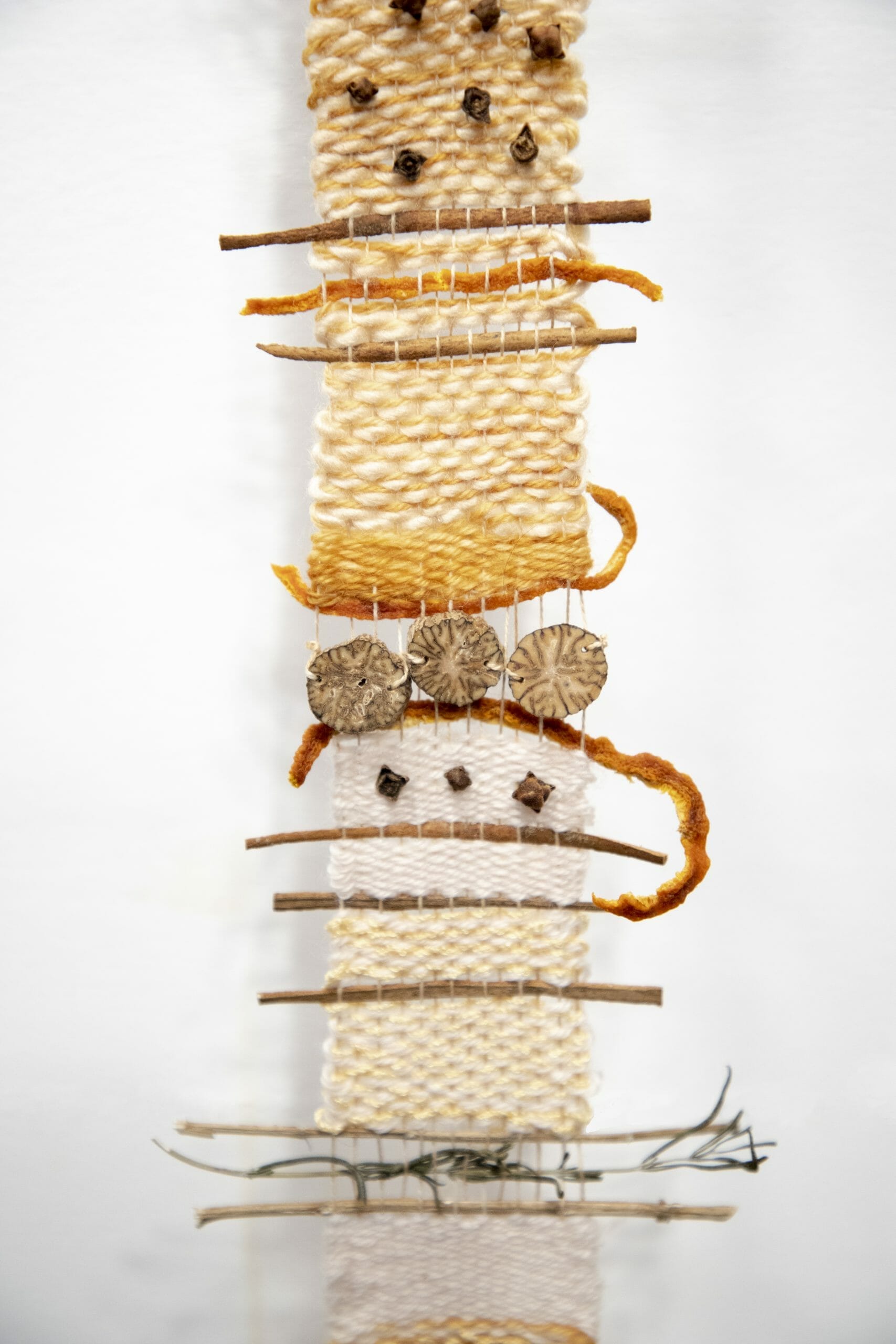
You are a Certified Permaculture Designer. Can you explain what Permaculture is and how its principles permeate your artistic practice?
Permaculture is a term derived by the idea of “permanent agriculture,” and is essentially a holistic design that works with nature to cultivate an integrated ecosystem, prioritizing biodiversity and resilience. Permaculture looks at what is already happening in a space, and chooses to work with the land and natural systems in place, seeking to do so in a closed-loop system as opposed to uprooting an area for production in a more extractive process (which is often what modern-day agriculture can look like). The first principle of permaculture is to “observe and interact.” This is the lens that guides my art making. I most often make in a way that is material-led, so I begin from this space of observation, using my senses to touch and look, and from there to see what might be possible. I also almost exclusively use materials that are either found, repurposed, foraged, or home grown (as in the case of my natural dye garden), seeking to create within a closed loop system in my own way, to produce no waste (another permaculture principle).
Pillow Portal is the work you are presenting at Fiberart International 2022. Can you tell us about its genesis and meaning?
Pillow Portal began as a material-led piece. I had to retire some old linens and decided to place them within my studio rather than throw them in the garbage. Around that same time, as I was dyeing fabric in my kitchen one day, I began to just observe that the onion color of the dye bath was very similar to the inside of old tomato cans that I was about to place in my recycling bin. I started to observe these items side by side with new appreciation for the golden tones and shine of the tin can, which prompted me to place them within my studio as well. The shape of a circle holds significance for me, and is also aligned with the ideas behind permaculture. As I was later exploring materials in my studio space, I felt a curiosity to punch holes through the retired pillow with the discarded tin cans. From there, I added the onion dyed fabric on one side, and something else that I had in abundance on the other side— dryer lint. It is often the act and duration of making which helps me discover the meaning of each of my works. As I worked on creating Pillow Portal, much of the uncovered meaning became about a struggle for rest. I have two young children, and the loss of sleep and constant caregiving in this phase of life, especially within the context of pandemic fatigue, were wearing on me. Though I could interact with the pillow by lacing my arms through it in an embrace, the pillow itself would not be a comfortable option. I decided to suspend the work from the ceiling with this theme of restlessness in mind, to further consider the tantalizing suspension of rest—how it can feel so close, yet is often a challenge to come by. Another layer of the work, however, is taking materials that are otherwise used up and to be discarded (onion skins, retired linens, empty cans, and even lint—the very dust of life) and discover a way to breathe something new into the leftovers.
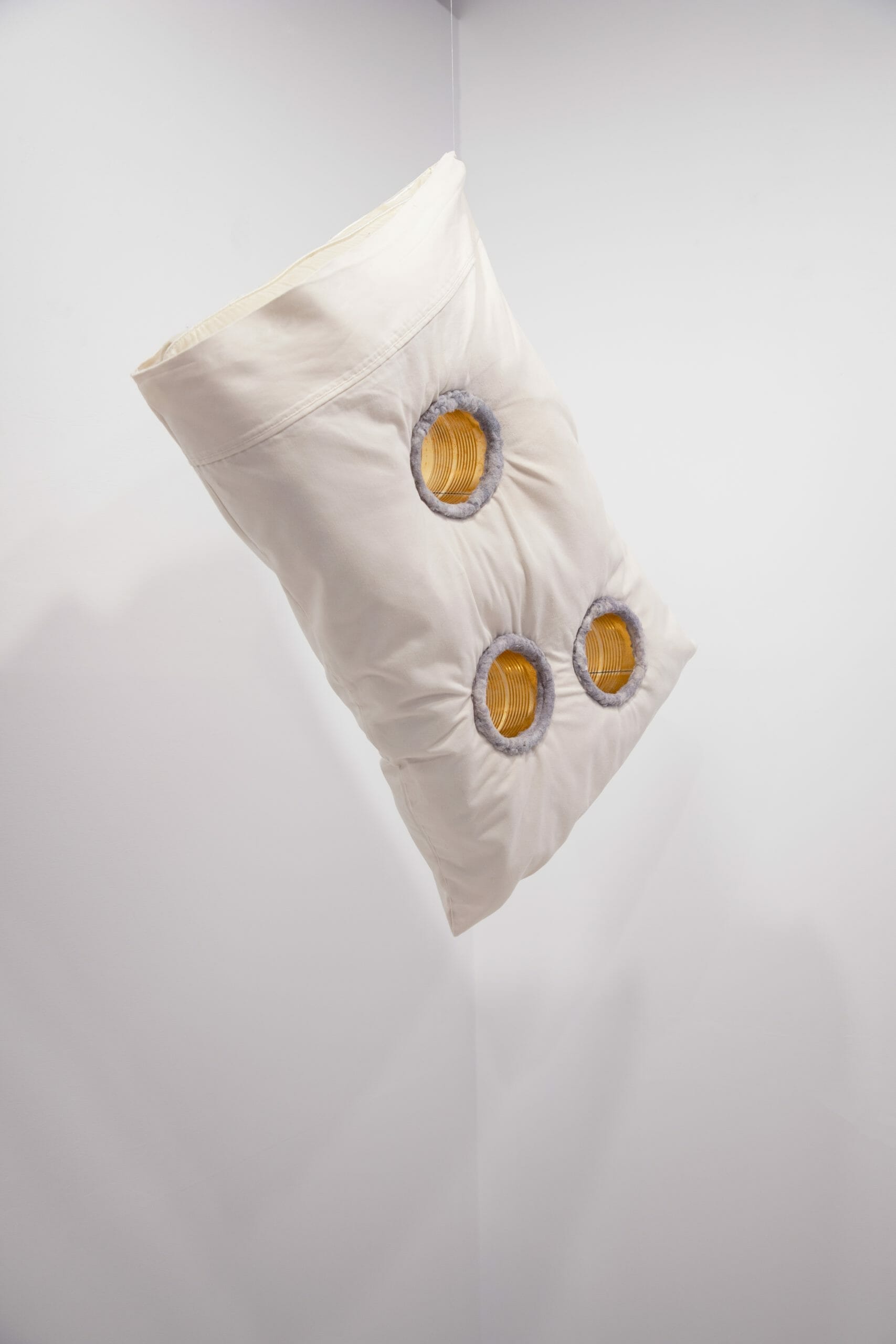
How important is it for an artist to have access to a prestigious event like Fiberart International?
I think it’s incredibly important for artists to have access to events like Fiberart International. Seeing the boundaries that can be pushed and possibilities that can be imagined around how fiber and fiber techniques are used is absolutely thrilling. There is something uniquely compelling about fiber. Perhaps it is the familiarity we all have with textiles in our lives—from the very beginning of our lives we have been touched by fabric and it continues to hold a critical place within our daily lives. I think the breadth and pervasiveness of fiber and textiles deserves to be celebrated and upheld with high regard. The nature of fiber is a connective one, and the connective quality is exciting to consider in the space of an international exhibition. While I’ve explored and enjoyed working in a wide array of different mediums over the years, fiber art feels most distinctly like my mother tongue of making.
In your works, what is the relationship between the materials and the finished work? Is the material exclusively a means of expression or does it also, in some cases (in works such as Molt), become the theme of the work?
Materials are critical in my works as they often orient the genesis and/or significance of each piece. Molt is definitely one of those works. Molt is created with my own hair, which I lost in the postpartum period after the birth of my second child. I collected and handspun 40 yards of it to signify the 40 weeks of pregnancy as well as the first 40 days of postpartum, which is understood to be a healing and nurturing window of time observed in some cultures. Molt explores one of the many ways pregnancy and motherhood necessitate the capacity to let go.
You have travelled a lot in the past, often going to different and faraway places. How is this experience, this part of your life, present in your work?
While I have made a few works that reflect on my relationship and history of moving, such as Heimat and Relocation, much of my current work is a bit more about my eventual appreciation and need for rootedness. After I moved around so much growing up, I found myself eager to root and acclimate to an area for a time after college. To my surprise, I’ve lived in Pittsburgh now for that entire stretch of time, only moving a few streets since. I think perhaps one place some of my moving history shows up is in my use of packaging and generally repurposing materials in my work. Not only were boxes pervasive in my view, but my mom would also often save various packaging items for me to play in, draw on, and reimagine entirely.

A work or a project to which you are particularly attached?
One work of notable significance for me personally is Margin Expansion which I made in 2021. The form of Margin Expansion is a large-scale soft sculpture representing the margin of a standard canary yellow notepad. It was created as a reflection on my relationship to the nature of time—the margin itself created by food scraps as natural dye and old sheets. Turmeric, as the most prominent color in the work, is inherently less stable in nature and will fade over time. Stitched and stretched together, the materials culminate in a work that is both linear yet dimensional, expansive yet hanging by threads. The work speaks to my desire to embody an expansive view of time, though I most often perceive time as both linear and limited.
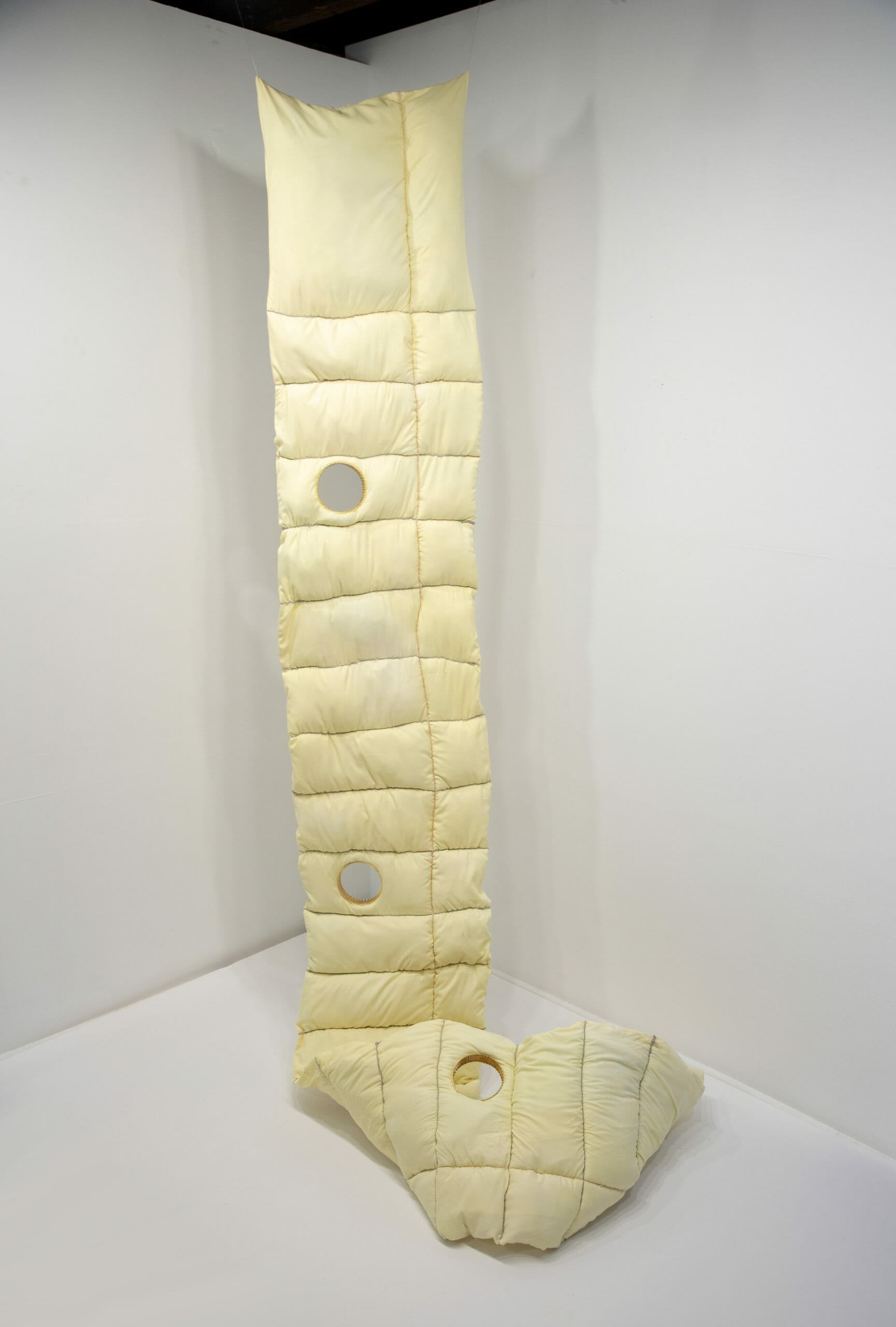
I certainly often fall in love with works as I get to know them through the act of making, but as I view one of the materials I work with as time, I am thus continuingly encountering the nature of impermanence. Since I work with many natural materials, I’m aware that even though there is inherent longevity in many of my works, some of the colors or components will fade or shift over time, so I try to embrace their changing nature and think of that evolution as part of the work.
Future projects?
I recently got a new loom and am very invested in working at it currently. I recently taught myself techniques of double-weaving, which is opening up so many possibilities to explore more sculptural approaches to weaving. I’m excited to follow my curiosity of where these explorations will take me, and hope to have the opportunity of going on a residency in the near future

